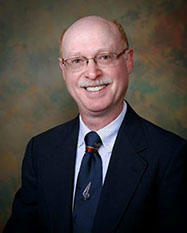I will remember that I do not treat a fever chart, a cancerous growth, but a sick human being, whose illness may affect the person’s family and economic stability—taken from the Hippocratic Oath.
When the Obama administration began pushing for the passage of the Affordable Care Act (ACA), the claim was made that the Act would make health care better and more affordable for everyone. Since health care costs are now responsible for about 17.8 percent of the Gross Domestic Product (GDP), the goal of decreasing costs makes sense. However, the claim that increasing the number of people covered by third party payers would lead to a decrease in costs was difficult to understand.
It is obvious that something has to be done to reign in the cost of health care in America. Health care costs were $3.2 trillion in 2015. This comes out to about $9,990 per person in the country. Despite the implementation of the ACA, the percent of GDP paid for health care has actually gone up; it was 17.4% of GDP in 2014.
Under free-market principles, costs will depend on what people will be willing to pay for a product that they desire. If the costs for health care are paid by someone else, it is reasonable to assume that market principles may not apply. If someone gets sick, they will want their doctor to do whatever is necessary, or not, to get them well. With this model, the only ways to decrease costs are to pay less to those that are providing the health care service, or restrict what will be paid for on the front end.
Unfortunately, health care has been mostly a fee-for-service model since the mid 1960’s. By doing more, the physicians were paid more. It has been estimated that one third of the procedures and one third of the tests were unnecessary; eliminating the incentives to doing tests and procedures will lead to significant cost reductions.
One of the most significant consequences of the ACA is that it forced more physicians out of private practice and into the employment of hospitals and clinics. As salaried employees, they are less likely to order unnecessary tests or do unnecessary procedures since their income will no longer depend on what they do; unless their contract has incentives for doing more and ordering more.
To contain costs, it would be a good idea to prevent the employer from coercing the provider to do more procedures and order more tests by tying remuneration to services billed. I’ll bet Congress can do that under its Commerce Clause powers. They could easily do this by capping payments based on the disease entities being treated. This would incentivise the providers to follow best practices and even look for better ways to care for chronic conditions in hopes of keeping the patient out of the hospital where costs are high.
A return to free-market principles also makes sense for the purchase of health care insurance. Letting people shop for the coverage they need for their family, without artificial goverment requirements for coverage that will never be used by that particular buyer, will lead to a decrease costs for the insurance and make it more likely that more people will be covered. Even young and healthy people should be willing to buy coverage for the possibility of a devastating injury or early onset cancer so long as the premiums are reasonable. After all, most people are willing to buy other forms of insurance such as auto, homeowners, and life even though they are unlikely to ever get a payout.
Patients with pre-existing conditions may have to pay more so there may need to be some premium support from the government. No one should ever be denied coverage no matter what their pre-existing condition is; this part of the ACA should be kept no matter what the new plan is.
Allowing people to buy insurance across state lines and keep insurance when they change jobs would also lead to a decrease in premiums and deductibles which would increase the number of people buying the health insurance.
Even with the return of free-market principles in the health insurance market, there will still be some patients, not covered by Medicare and Medicaid, who will still not buy insurance. However, these patients will still need to be given care if needed. After all, this is America!
For people who are not covered by Medicaid or Medicare and who do not have their own health insurance policy, there are safeguards already in place to make sure that they will be cared for in an emergency. Under the Emergency Medical Treatment and Active Labor Act, anyone presenting to a hospital that takes Medicare must be given an emergency screening exam and if that exam reveals an emergency medical condition, stabilizing treatment. By the time the patient is stabilized, the physician-patient duty will have been established so that further care must be provided under the State’s laws dealing with medical malpractice and the requirements of the various licensing bodies and specialty boards. Patients without coverage will be responsible for the costs, but it is unlikely that hospitals and providers will ever be paid.
Let’s not forget that most physicians in America who have graduated from American medical schools, have taken the Hippocratic Oath. Under this oath, they have sworn to do no harm and to take care of people regardless of their ability to pay. The physicians I know take this oath very seriously—I actually have a copy of the oath (written in the original Greek language) hanging on my office wall.
Couple the increase in people with third party payers along with requirements placed on the health care providers, the foundation has been set to decrease payments for health care itself. The added requirements of electronic health records (EHR), complex forms for billing—which led to the necessity of hiring knowledgeable coders, and the increasing complexity of health care laws relating to fraud, privacy, and proper documentation, all made it more difficult for the health care providers to maintain their incomes. It is now estimated that physicians spend 50 percent of their time filling out forms for billing and for performance measures which are required under the law. There must be some relief for the providers who are being squeezed from both ends or we are heading towards a perfect storm where we will not have enough health care providers to care for the ever increasing influx of patients.
For the people now on Medicare and Medicaid, let them keep that coverage but increase the number of providers willing to take care of those patients by allowing for tax write-offs for the cost of care not covered by the Medicare and Medicaid payments. Write-offs should also be allowed for patients without any coverage. Allowing for these write-offs will likely make the care less costly as the providers would be more willing to compete for these patients. There will need to be a bureaurocracy in place to adjudicate any discrepancy in the costs claimed and the write-offs allowed, but these discrepancies should decrease as more data on costs accrues over time.
Another way to help decrease the costs associated with health care is to require that those writing the laws be subject to the same laws they are requiring for everyone else. Since we are a nation of laws where everyone is supposed to be equal under the laws, this should already be in effect; for some reason that I have never understood, this is just not the way it is.
 by Darryl S. Weiman, M.D., J.D.
by Darryl S. Weiman, M.D., J.D.
Professor, Cardiothoracic Surgery, University of Tennessee Health Science Center and Chief of Surgery, VAMC Memphis, TN

